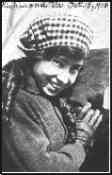
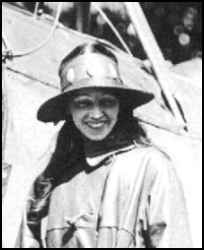
 |
 |
Photo from Edith Dodd Culver's The Day The Airmail Began |
Collection of Sumner B. Morgan Photo Courtesy of Carlos Rosa (rosateam@bellsouth.net) |
|
On July 18, 1915, at this same field, she became the first woman in the world to loop-the-loop. Katherine used to fit Roman candles on the wings of her airplane, when she made exhibition flights at state fairs. In many of the exhibitions at night, she would come down after the fireworks display in the middle of a half-mile track with only a burning tar barrel to indicate where and how she was to land. In all her career, so far as I know, she never had an accident. It is said she taught Eddie Stinson to fly, and later here sister Marjorie. All three of them were excellent pilots---none better in his day that Eddie Stinson. Katherine is now the sedate wife of a Santa Fe Judge, and hard to picture as an early stunt flyer. Autographed: To Walter Lees, whose skill and quick thinking saved the day --- and him too., Sincerely, Bill Stout, Nov. 1952 |
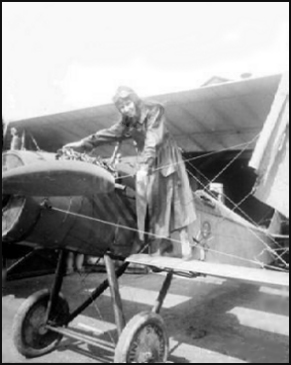 |
Library of Congress Collection |
|
"WHEN FAIR FOLKS FLY." Sunday, August 3, 1919 |
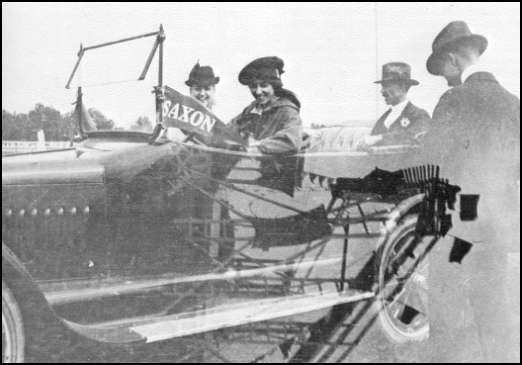 |
at Richmond Fair Grounds, October 1916 Photo from Edith Dodd Culver's The Day The Airmail Began |
|
Using Paul's Curtiss credentials and pilot's license, we were allowed to enter the grounds and to pick our way across the field through the darkness to where Katherine and her mechanic, Shorty Schroeder were preparing for her flight. Paul introduced himself and me. It seemed that the fact that Paul was one of Capt. Baldwin's boys was all the credentials we needed. Katherine Stinson was a surprise to me. I suppose I expected her to be mannish. Instead, she was something quite the opposite, fragile and dainty. Her friendliness and soft refined voice masked unbounded endurance and courage. She was a brunette version of Mary Pickford with long chestnut curls fringing her checkered cap. She was definitely feminine. She was America's sweetheart of the airways at that time as surely as Mary Pickford was America's sweetheart of the silent screen. She appeared perfectly calm as she and her mechanic checked over the plane, revved up the motor to be sure it was running properly and making sure that the magnesium flares which were attached to the edge of the lower wings were secure. She could well feel confidence in her capable mechanic because he was none other than Rudolph "Shorty" Schroeder who was later to become one of America's most well known aviators. Katherine had discovered this tall gangling 6 foot 4 inch mechanic in Chicago when she needed someone to keep her airplane in good shape, and she was fortunate enough to be able to persuade him to be a part of her team. He was all business as he tested wires, controls, etc. Soon a megaphone announced that the great aviatrix, Katherine Stinson, would make a daring night flight above the field, executing the difficult figure eight maneuver. She took her place in the open cockpit, strapped her safety belt, pushed the visor of her checkered cap around, tucked her curls up into it to keep them out of her eyes; Shorty spun the wooden propeller with one swing to start the motor and signalled Katherine away. She opened the throttle, taxied to the end of the race track, and the next thing we knew she was in the air. We followed her maneuvers by the lighted flares which drew luminous figure eights against the dark sky as she circled above the race track. The crowd watched, spellbound. After about ten minutes she came in for a landing. Cutting her motor was a signal to those tending the bonfires placed at intervals along the edge of the runway, to throw a small can of gasoline on their fires so they would flare up simultaneously to give light to guide her in. She made a perfect landing and taxied her plane over to where Shorty was waiting. Afterwards, we were to sit around the camp-fire and talk about flying until the dying embers reminded us that it was time for Shorty to stake the plane down, swathe the engine in canvas, and then for all of us to go to the hotel fora a good night's rest. Our pleasant encounter with Katherine led to a friendship that we resumed at the Early Bird meetings and later when she gave up flying altogether for a domestic role, becoming Mrs. Michael Otero of Santa Fe, New Mexico. She had a remarkable flying career that took her all over the United States and the Orient where she was feted and showered with trophies and gifts. She even flew the United States mail for a period. She had done it all --- a true pioneer. Cub Flyers Enterprises Inc. EDITOR'S NOTE: I had the great pleasure to meet and know "Aunt Teed" as she remained a friend of Loa Lees and the family till her death. Her book is a treasury of her memories of the early days. |
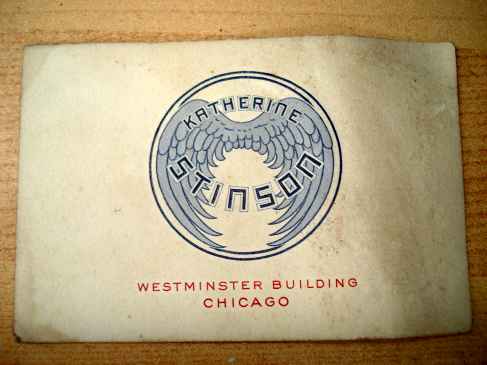 |
|
Collection of Benjamin Lyman, 5-26-09 I buy and sell ephemera and came across this calling card from Katherine Stinson that is signed on the back...it was among a group of items from a WWI vet who must have met her in Richmond, VA or vicinity in 1916, he had many other "Ladies" calling card from around the country and the world. Im sure there is a story here. She has signed it with a message on the back. Do you know if she visited Virginia as part of her duties in October 1916? thanks for any information you can provide. Sincerely, Benjamin Lyman |
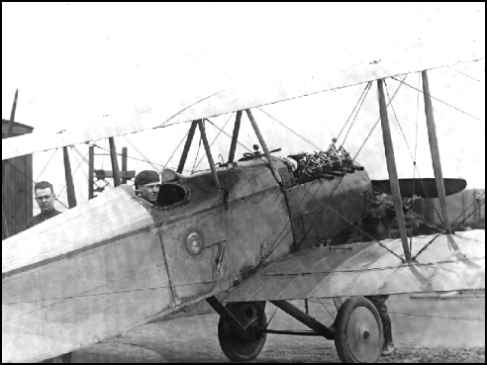 |
|
On August 16, 2002, he wrote: "Dear Ralph: I just discovered, on Aerofiles, that the biplane in this photo has been identified by someone as the 1917 Curtiss-Stinson biplane. It was used by Katherine Stinson and the entry for it on Aerofiles can be found at Aerofiles. This photo also appears on my Ancient Aeroplanes CD, by the way, as the original vintage print of the photo is now in my collection. Best wishes to you and your family!!! Roy On June 17, 2002, Roy Nagl wrote: Dear Ralph: I received the attached photo, today, that was described by the seller, as being taken at McCook Field, during 1918, and thought I should update you on it. The back of the photo says "taken in Grant Park, on May 15, 1918. The emblem, on the side of the plane by the way, has the word "Stinson" written around a picture of a globe of the Earth. I don't know if this photo has any historical relevance to Walter Lees at McCook Field, but I thought I should bring it to your attention, anyway, just in case it does. My best wishes to you and your family! Roy Nagl Ancient Aviators Website |
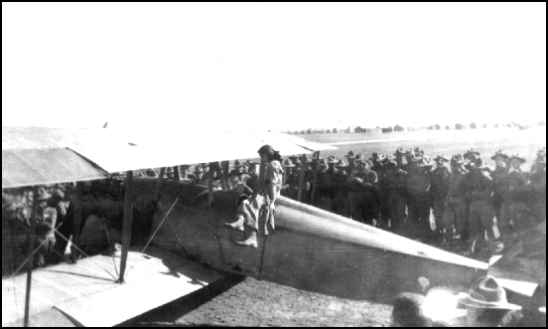 |
|
Photo and text courtesy of Roy Nagl Ancient Aviators Website |
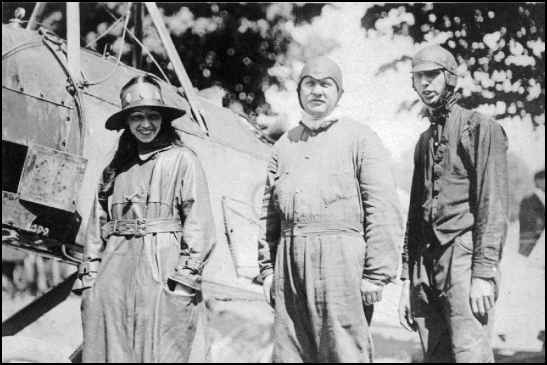 |
|
Photo Courtesy of Carlos Rosa |
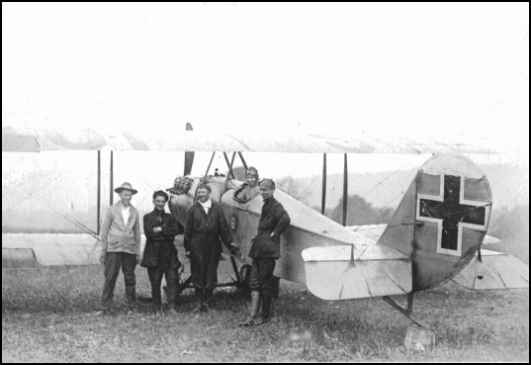 |
|
Sumner B. Morgan at far right Collection of Sumner B. Morgan Photo Courtesy of Carlos Rosa |


|